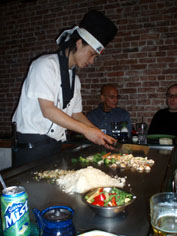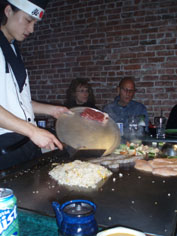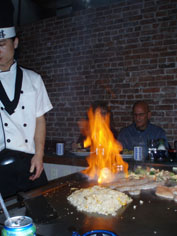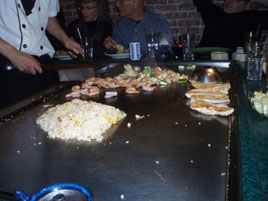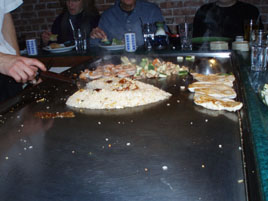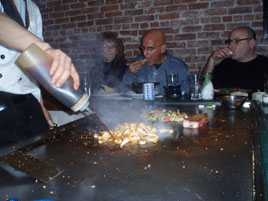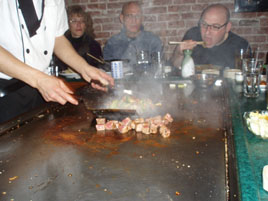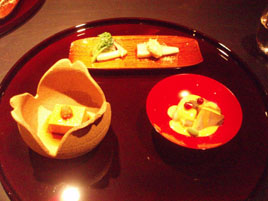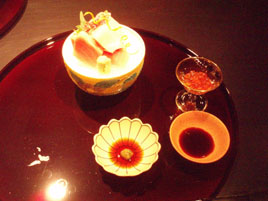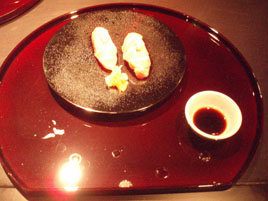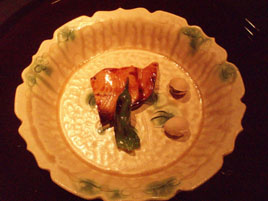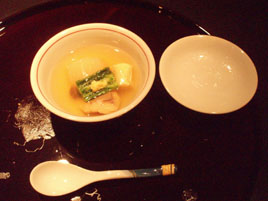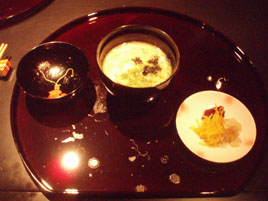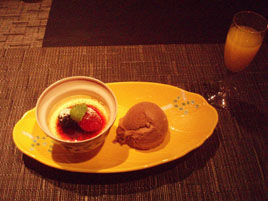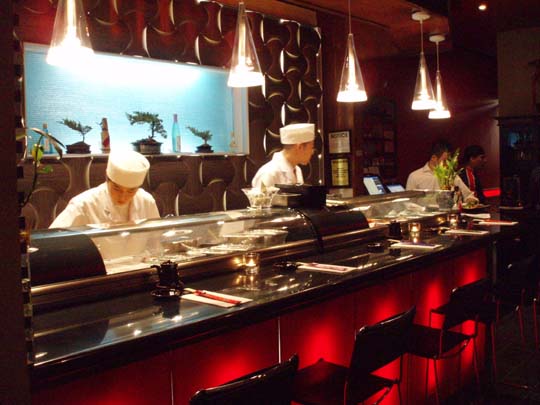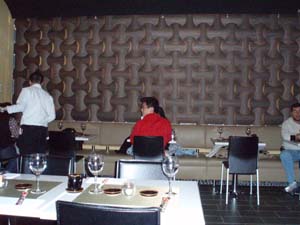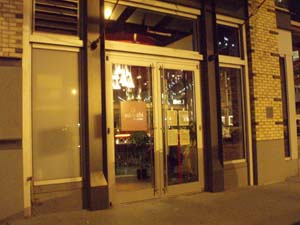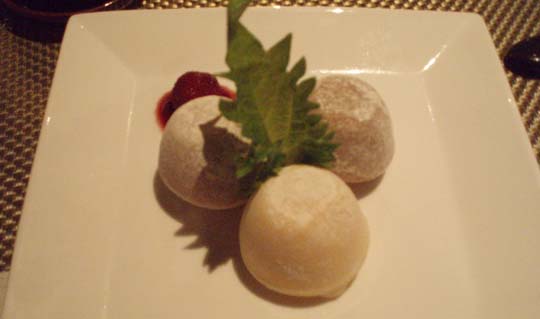Bar Masa
 Thursday, May 8, 2008 at 03:36PM
Thursday, May 8, 2008 at 03:36PM 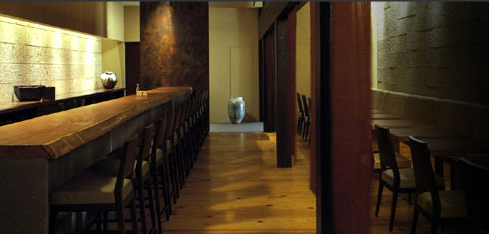
When Masayoshi Takayama sold his famed Los Angeles sushi restaurant and moved into the Time-Warner Center, most of the attention was lavished on his famously expensive four-star gem, Masa. There, you pay anywhere between $400–500 per person for whatever omakase menu Chef Masa wants to serve that day.
 I’ve not been to Masa, as the appropriate occasion to blow $1,000 (for two) on sushi hasn’t yet presented itself. There’s an adjoining restaurant called Bar Masa, and I gave it a try the other night. Reservations aren’t taken, but the bar was only about half full, and only a couple of tables were unoccupied.
I’ve not been to Masa, as the appropriate occasion to blow $1,000 (for two) on sushi hasn’t yet presented itself. There’s an adjoining restaurant called Bar Masa, and I gave it a try the other night. Reservations aren’t taken, but the bar was only about half full, and only a couple of tables were unoccupied.
Bar Masa has garnered scant critical attention, perhaps because it’s considered an annex of Masa. But Bar Masa is really a separate concept. Here, the menu is à la carte. If you’re in the chef’s hands at Masa, at the place next door you’re totally on your own.
Given that it’s run by a sushi chef, I thought that Bar Masa referred to a sushi bar. Silly me. It’s an alcohol bar that also offers food. Whatever you order, even if it’s sushi, is prepared behind the scenes, thereby depriving you of one of the great joys of sushi dining: the interaction with the chef.
The first two facing pages of the menu are dedicated to prepared foods. There are about 90 choices. That’s not a misprint. They’re priced anywhere from $8–68, but mostly $18 and higher. They’re in ten different categories, like “Chilled,” “Salad,” “Hibachi Grilled,” “Braised,” “Fried,” etc. I had trouble getting clear guidance from the confused servers, but it seems that the vast majority are appetizer-sized, meaning you’d probably need to order a good three or four of them, maybe five or six if you’re hungry, to make up a full meal.
 The next couple of pages are the sushi menu, with rolls $18–120 (most $25 or less) and sushi/sashimi $6–65 (most $10 or less), or $98 for the omakase.
The next couple of pages are the sushi menu, with rolls $18–120 (most $25 or less) and sushi/sashimi $6–65 (most $10 or less), or $98 for the omakase.
This being a bar, there is a drinks menu, which takes the price of dining at Bar Masa to ludicrous levels. The house cocktails are $18–35, including $20 for an “Ocean Bloody Mary” (tomato and clam juice with pepper celery ice cubes). Sakes, sold by the caraffe, are $19 and up; wines by the glass $16 and up; by the bottle $60 and up.
I confess some curiosity as to what a $20 Bloody Mary would be like, but I didn’t feel lucky, and I felt totally adrift in the sprawling menu. I only wanted a snack, so I ordered the cheapest caraffe of sake ($19) and two of the prepared dishes.
The caraffe of sake came in a stone bowl, wrapped in ice; the ceramic cup was pre-chilled, too. You pay through the nose here, but at least the presentation is first-class.
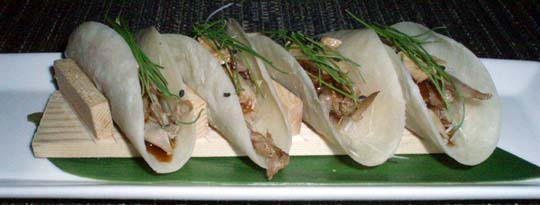
Peking duck with foie gras in mooshu skin ($24) was a miniature version of the Chinatown classic. The preparation was lovely, but the food was not really that much better than you get elsewhere. And those pancakes were awfully small—about two bites apiece—making the dish $3 a bite.
The server asked that I discontinue taking photographs, so I can’t show the more striking dish, the Crispy Snapper Head ($28). There was no mistaking the poor snapper when the plate arrived: a fish head split in two, with a vacant eye socket staring at me. The eyes themselves, the brains, and indeed all of the fleshy parts were excavated before the head was breaded and tossed in the deep fryer.
Once I got past the gross-out factor, the dish was a disappointment. With the soft parts gone, all that remained were a bread crust and dessicated bones. Think Southern-fried chicken without the chicken. Either they wasted a perfectly good snapper, or someone else got the tasty parts.
Desserts was the only bargain: I finished with a perfectly respectable cheesecake: $9.
There are probably many gems, along with some duds, on the menu at Bar Masa. But two small appetizers, the cheapest caraffe of sake, and a small dessert set me back $100 (including tax and tip). At that price, I’m not rushing back.
Bar Masa (10 Columbus Circle, Time–Warner Center, 4th floor)
Food: *½
Service: *½
Ambiance: *½
Overall: *½



